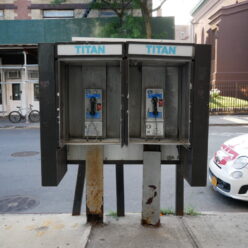TO: Prof. Ellis
FROM: Norbert Derylo
DATE: Oct 27, 2021
SUBJECT: Expanded Definition of Network
Table of Contents
Introduction
In this paper I will be writing about the definition of the word “network.” I will be writing about how network was originally used and will compare it to how it is used in modern day. I will also write about how network is used in different contexts in modern day society. I will finally write about how network is used in terms of computers and data.
Definitions
Network was used in the Bible, one of the oldest pieces of christian literature. The word’s definition in that book was “Work (esp. manufactured work) in which threads, wires, etc., are crossed or interlaced in the fashion of a net; frequently applied to light fabric made of threads intersecting in this way” [1]. This definition refers to more physical objects which is very different compared to what network is defined as modernly. One definition from modern times is “a network is nothing more than a set of discrete elements (the vertices), and a set of connections (the edges) that link the elements, typically in a pairwise fashion” [2]. The modern definition of network is more about grouping objects together based on how they interact with each other. The modern definition is more broad and in a way agrees with the old definition. The older definition of network comes from a time in which people would be more focused on trying to survive. Nets are a tool that have a very distinct pattern and such anything with that pattern could be described as a network. Compared to modern day we do not really use nets anymore unless it is a part of your profession. Network has lost its connotation of being a net and now just refers to the pattern. As such using the modern definition of network you can describe a net as a network of threads.
Context
Network is a word that requires context to understand what it means. A network describes how a group of objects interact, and therefore you need to know what those objects are. For example the following quote talks about networks in a corporate environment: “The knowledge network of a firm is a structural representation of its cumulative stock of rules, routines, practices, or documents and as such is the result of collective efforts of past and present employees” [3]. In this context a network is about the knowledge a business has collected. If you take out the word knowledge you can see how all of those objects work together and can be considered a network. A network can also be viewed as a set of objects. This following quote is from a survey about wireless sensor networks: “Energy conservation in a WSN (wireless sensor network) maximizes network lifetime and is addressed through efficient reliable wireless communication, intelligent sensor placement to achieve adequate coverage, security and efficient storage management, and through data aggregation and data compression” [4]. In this case the network is looked at as one single object instead of a set of objects that are connected. This is because in a wireless sensor network the entire network defines what it is. If you take any part of it out it loses its status as a network and instead becomes a collection of equipment. Network is very versatile in its uses and can be used to describe many things, however its definition is very dependent on its context.
Working Definition
In my major of computer information systems there are two major definitions. The most well known use of the word network is through computer networks. This refers to how computers connect to each other. One well known computer network is the internet. Computer networks are bluntly computers that can communicate with each other to transfer data. The other definition for network in my major is data networks. These networks are often limited in access and tend to hold more sensitive data. The difference between these two types of networks is how people interact on them. On computer networks computers and their users interact with each other. On data networks users tend to interact with a set of information and very minimally with other users. In both cases the network is defined by what you are trying to connect with as a user.
References
[1] “Network,” in Oxford English Dictionary, 3rd ed. Oxford, UK: Oxford Univ. Press, Mar. 2012, def. 1. [Online]. Available: https://www-oed-com.citytech.ezproxy.cuny.edu/view/Entry/126342?rskey=qXENxr&result=1
[2] Newman, M. et al. (2006) The structure and dynamics of networks. [Online]. Princeton: Princeton University Press. Available: ProQuest Ebook Central
[3] Brennecke, J. & Rank, O. (2017) The firm’s knowledge network and the transfer of advice among corporate inventors—A multilevel network study. Research policy. [Online] 46 (4), 768–783. Available: https://doi.org/10.1016/j.respol.2017.02.002.
[4] Jennifer Yick, Biswanath Mukherjee, Dipak Ghosal, Wireless sensor network survey, Computer Networks, Volume 52, Issue 12, 2008, Pages 2292-2330, ISSN 1389-1286, https://doi.org/10.1016/j.comnet.2008.04.002.



